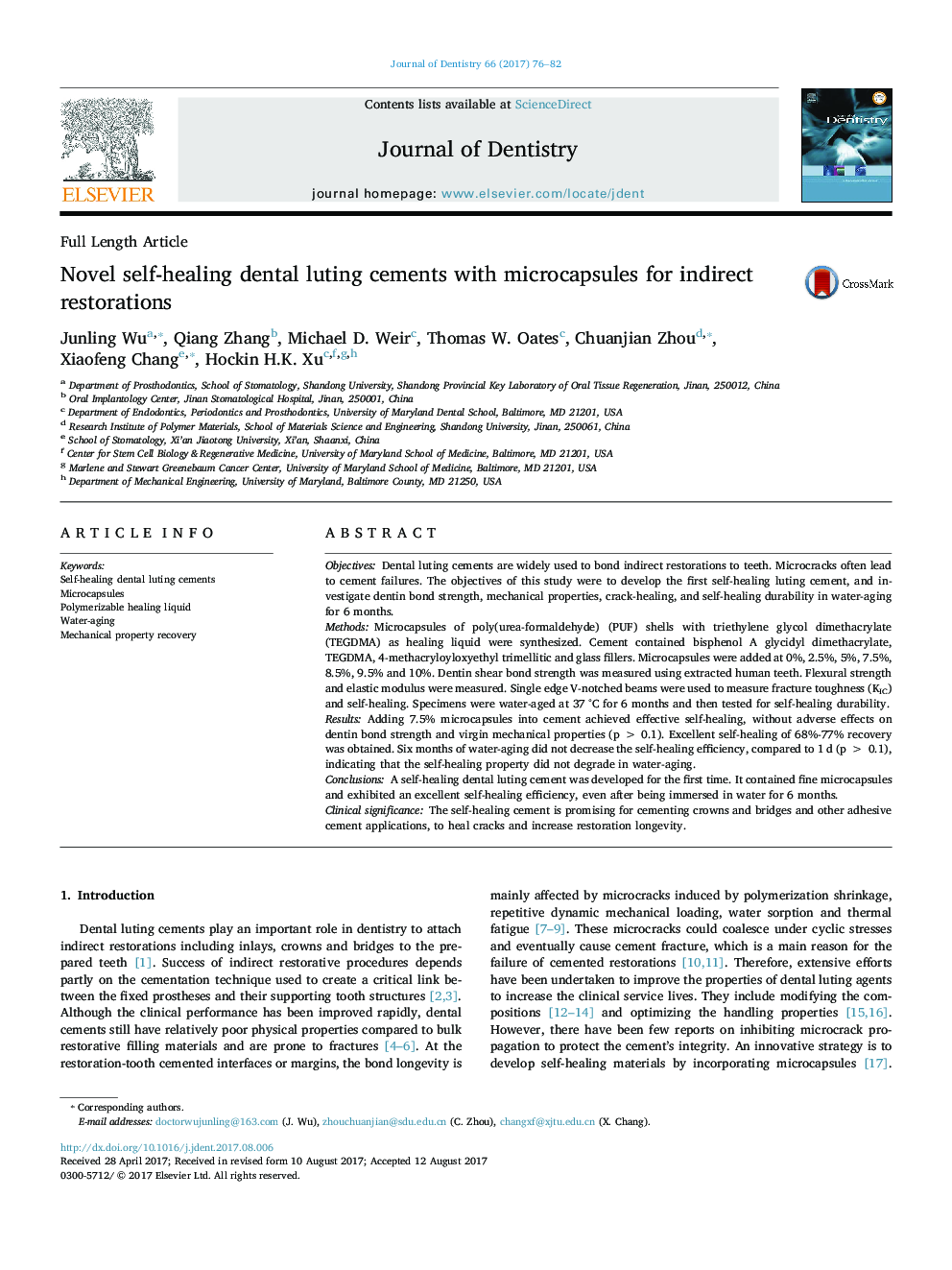| Article ID | Journal | Published Year | Pages | File Type |
|---|---|---|---|---|
| 5640489 | Journal of Dentistry | 2017 | 7 Pages |
ObjectivesDental luting cements are widely used to bond indirect restorations to teeth. Microcracks often lead to cement failures. The objectives of this study were to develop the first self-healing luting cement, and investigate dentin bond strength, mechanical properties, crack-healing, and self-healing durability in water-aging for 6 months.MethodsMicrocapsules of poly(urea-formaldehyde) (PUF) shells with triethylene glycol dimethacrylate (TEGDMA) as healing liquid were synthesized. Cement contained bisphenol A glycidyl dimethacrylate, TEGDMA, 4-methacryloyloxyethyl trimellitic and glass fillers. Microcapsules were added at 0%, 2.5%, 5%, 7.5%, 8.5%, 9.5% and 10%. Dentin shear bond strength was measured using extracted human teeth. Flexural strength and elastic modulus were measured. Single edge V-notched beams were used to measure fracture toughness (KIC) and self-healing. Specimens were water-aged at 37 °C for 6 months and then tested for self-healing durability.ResultsAdding 7.5% microcapsules into cement achieved effective self-healing, without adverse effects on dentin bond strength and virgin mechanical properties (p > 0.1). Excellent self-healing of 68%-77% recovery was obtained. Six months of water-aging did not decrease the self-healing efficiency, compared to 1 d (p > 0.1), indicating that the self-healing property did not degrade in water-aging.ConclusionsA self-healing dental luting cement was developed for the first time. It contained fine microcapsules and exhibited an excellent self-healing efficiency, even after being immersed in water for 6 months.Clinical significanceThe self-healing cement is promising for cementing crowns and bridges and other adhesive cement applications, to heal cracks and increase restoration longevity.
